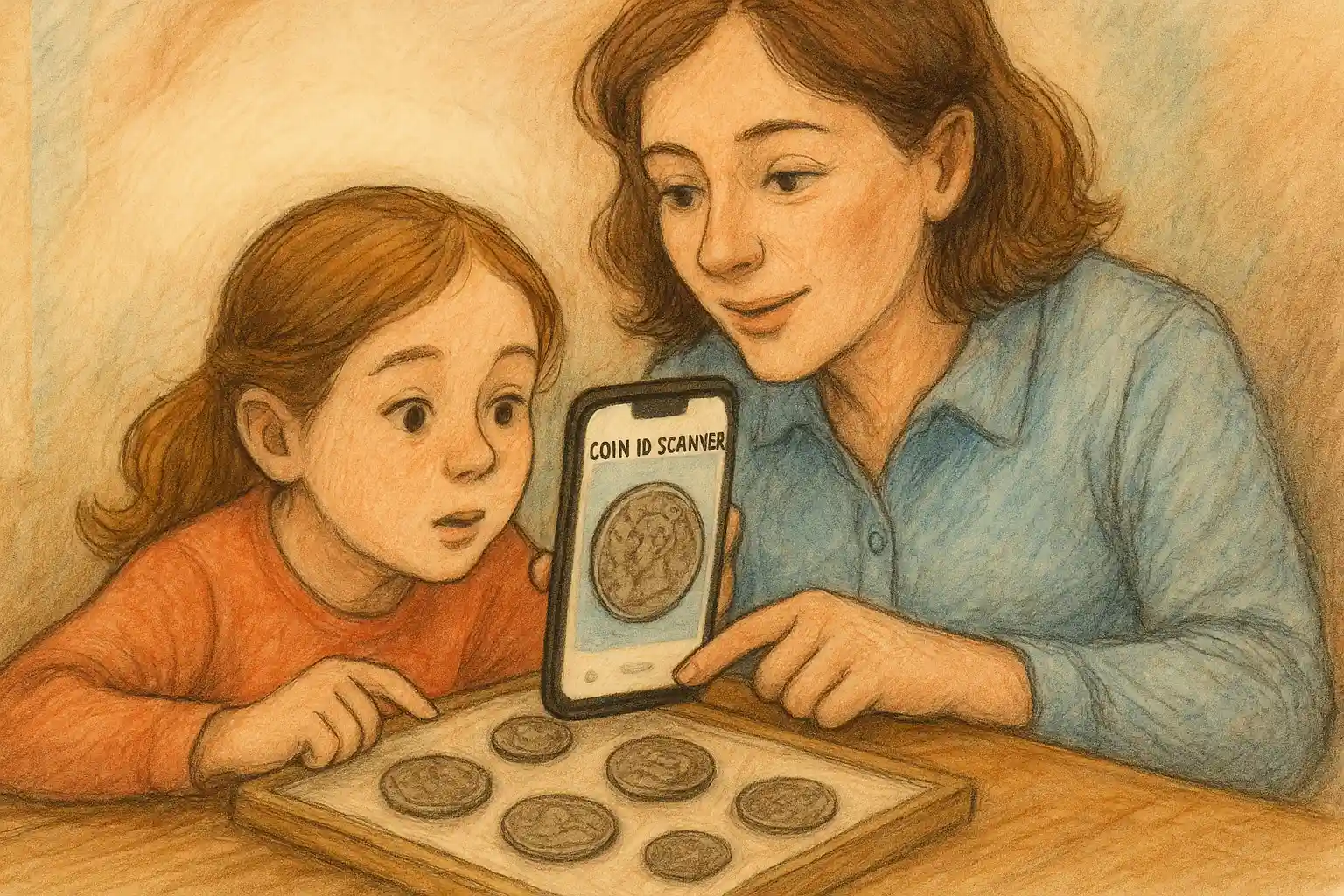How to Collect Paper Money — Guide for Beginner Numismatists
Numismatics is often associated with coins, but paper money holds an equally captivating place in this field. Collecting banknotes isn’t just about owning currency; it’s about preserving pieces of history, artistry, and culture. For history enthusiasts, investors, and those fascinated by global traditions, paper money can be a rewarding hobby.
So, are $2 bills worth anything in any way? Spoiler: they do!

Understanding Paper Money
Types of Paper Money
Paper money comes in various forms, and knowing these differences will help you identify what interests you most:
Type of Paper Money | Description | Common Use |
Banknotes | Standard currency issued by a central bank. | Everyday transactions. |
Currency Notes | Government-issued notes, sometimes with different backing than banknotes. | Legal tender, often during transitional periods. |
Commemorative Notes | Special editions marking significant events or anniversaries. | Collectibles, not always meant for circulation. |
Key Features to Look For
When evaluating paper money, pay attention to these essential elements:
Country of Issue — Identifies origin and often influences design style.
Denomination — The face value of the note.
Year of Issue — Can indicate historical significance or rarity.
Design Elements — Artwork, colors, and historical figures depicted.
Signatures — Often from the treasury or central bank officials.
Watermarks & Security Threads — Help confirm authenticity.
Serial Numbers — Unique identifiers that can influence value.
Essential Terminology for Beginners
Understanding the language of numismatics will help you navigate auctions, catalogs, and discussions:
Grading — The condition rating of the note, usually on a scale from Poor to Gem Uncirculated.
Series — A specific issue of a note, often tied to a year or design change.
Mint Marks — While more common in coins, certain paper money issues can include location identifiers in the printing process.
Starting Your Collection
Choosing a Focus
The easiest way to begin is to start with currency that has personal meaning. Many beginners choose:
Banknotes from their own country.
Currency from countries they’ve visited.
Notes with designs they find visually appealing.
Where to Buy Paper Money
New collectors have several reliable options:
Reputable Dealers — Offer authentication guarantees and expert advice.
Numismatic Auctions — Great for finding rarer notes but require bidding experience.
Online Marketplaces — Platforms like eBay can yield good finds but demand caution.
Coin & Currency Shows — Provide opportunities to see and handle notes before buying.
Avoiding Common Pitfalls
Counterfeit Notes — Always verify authenticity before purchase.
Overpaying — Research market value before committing.
Impulse Buys — Stick to your collecting focus to build a coherent collection.
Preservation & Storage
Paper money is sensitive to light, humidity, and handling. Best practices include:
Plastic Sleeves — Made of archival-safe, acid-free materials.
Albums — Organized storage that keeps notes protected and visible.
Climate Control — Avoid extremes in temperature and humidity to prevent fading and deterioration.
Research and Education
A successful collection starts with knowledge. Understanding the history, rarity, and market value of each note you acquire will help you make smarter purchasing decisions and appreciate the stories behind your collection.
Why Research Matters
It helps determine whether a note is fairly priced.
It reveals historical significance, which can influence future value.
It equips you to spot rare variations or printing errors.
Recommended Resources
Resource Type | Example | Benefit |
Currency Catalogs | Standard Catalog of World Paper Money | Comprehensive listings with images, descriptions, and values. |
Numismatic Clubs | American Numismatic Association | Networking, education, and exclusive resources. |
Online Forums & Groups | Collectors Universe, Banknote Forums | Peer advice, trade opportunities, and rare find alerts. |
Leveraging Technology
Modern collectors have a significant advantage: digital tools that make cataloging, identification, and valuation faster and more accurate. Many apps allow you to:
Scan or photograph a note to receive instant details.
Create a digital inventory accessible from any device.
Track market price trends over time.

Documenting Your Collection
Meticulous recordkeeping transforms a simple hobby into a curated archive. A well-documented collection not only enhances personal satisfaction but also boosts potential resale value.
What to Record
Acquisition Date — Helps trace your collecting journey.
Purchase Price — Useful for tracking investment performance.
Condition / Grade — Document using a standard grading scale.
Provenance — The item’s ownership history, especially important for rare notes.
Benefits of Documentation
Facilitates insurance claims in case of loss or damage.
Supports accurate valuations for selling or trading.
Creates a personal historical record that can be passed down to future collectors.
A simple spreadsheet can work for small collections, while larger or more valuable collections benefit from specialized cataloging software or dedicated apps.
Investing and Market Trends
While many collectors focus purely on passion, paper money can also be an investment asset. The market for collectible banknotes is influenced by rarity, demand, and global economic trends.
Understanding Market Dynamics
Buy when demand is low or when you identify undervalued notes.
Hold rare or historically significant notes during periods of rising interest.
Sell when market demand peaks or when a note reaches a price that aligns with your investment goals.
Grading Services and Certificates
Professional grading services like PMG (Paper Money Guaranty) or PCGS Currency provide:
An objective assessment of a note’s condition.
Tamper-proof holders for protection.
Certificates that increase buyer confidence and market value.
Investors often seek graded notes because they are easier to trade internationally and command higher premiums.
Using Technology: Organizing and Identifying Coins and Notes
In the digital era, numismatists no longer have to rely solely on printed catalogs or manual recordkeeping. Technology has transformed the way collectors manage, research, and expand their collections.
Advantages of Digital Tools for Collectors
Instant Identification — AI-powered apps can analyze a photo and return detailed data in seconds.
Portable Records — Your collection inventory is accessible from your phone, tablet, or computer.
Market Insight — Many platforms provide real-time market value updates and trend tracking.
Secure Backup — Cloud storage ensures your collection records are safe from physical loss or damage.
For both coins and paper money, having a well-organized, searchable database helps you track acquisitions, avoid duplicates, and identify high-value items that deserve extra care.
Why Choose Coin ID Scanner App for Numismatists
For beginners who are just getting started — and seasoned collectors with extensive archives — the Coin ID Scannerapp has become an essential part of the collecting experience. While originally known for coin identification, it also supports organizing and managing paper money collections effectively.
Key Features of Coin ID Scanner
Feature | Description | Benefit |
Freemium Model | Basic features free; premium adds advanced tools. | Accessible for all collectors. |
Android & iOS Support | Works across devices. | Flexibility and convenience. |
Coin Identification by Photo | Take a picture or upload an image to identify instantly. | Quick verification before purchase. |
Detailed Coin & Note Cards | Includes minting years, country, type, composition, weight, dimensions, and prices. | Comprehensive research in seconds. |
Collection Management | Create and manage a digital archive. | Keeps your collection organized and searchable. |
Extensive Database | Over 187,000 coins from around the world; smart filters in premium version. | Saves time during searches. |
AI Coin Helper | Offers expert-like identification and learning assistance. | Increases accuracy and knowledge. |
Why It Stands Out
Unlike traditional cataloging methods, Coin ID Scanner combines identification, valuation, and organization in one platform. For paper money collectors, it provides the same level of precision and convenience that coin collectors enjoy, allowing for a streamlined, tech-driven approach to numismatics.
By blending history with modern technology, you can build a collection that’s not only meaningful but also well-documented, secure, and investment-ready. Whether you’re acquiring your first note or safeguarding a rare historical banknote, tools like Coin ID Scanner make the process smarter, easier, and more enjoyable.


